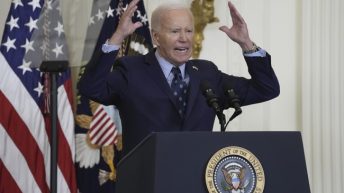The U.S. sent two B-1B Lancer bombers over the Caribbean Sea near Venezuela in a clear demonstration of military presence, marking the third such flight in recent weeks. Flight tracking showed the bombers patrolled international airspace off Venezuela’s coast, underscoring a steady pattern of American deterrence designed to protect regional security and reassure allies.
The flights are unmistakable signals that the United States will not ignore hostile activity close to our hemisphere. These missions flew in international airspace, so they were lawful and visible demonstrations of capability. The purpose was straightforward: remind adversaries and would-be troublemakers that the U.S. watches and can respond.
The choice of B-1B bombers matters. These aircraft are fast, long-range, and armed for a variety of missions, which makes them ideal for both deterrence and rapid response. Flying them close to an unstable or adversarial state sends a message in plain language that the U.S. military is active and ready.
Doing this repeatedly, as happened in recent weeks, reinforces that these are not one-off press statements. Consistency in posture is core to deterrence theory. When a nation shows a steady willingness to defend its interests, rivals are less likely to take risky actions.
This posture also provides reassurance to partners and neighbors in the region who worry about instability spilling across borders. Allies and friendly countries need to know the U.S. pays attention and can project power when necessary. That kind of certainty stabilizes diplomatic and security calculations across the hemisphere.
On the political side, domestic leaders should welcome clarity over ambiguity. A clear, robust defense posture avoids the costly mistakes that come from weak signals. It also matches the expectation that a strong nation defends its interests decisively and on principle.
Critics will call patrols provocative, but the context matters. Patrols were in international airspace, not an act of aggression. The point of these operations is to deter escalation before it takes root, and not to manufacture incidents. Responsible displays of force prevent crises rather than create them.
Operationally, these missions test readiness and interoperability across air, naval, and command assets in the region. That practical side matters for crisis response. It ensures crews, logistics, and command nodes work together under conditions similar to real-world contingencies.
Finally, messaging counts. These flights send a dual message: to adversaries, that the U.S. can and will operate where needed; and to allies, that the United States remains committed to hemispheric security. Maintaining that credibility requires steady, visible action, not occasional rhetoric alone.




Add comment